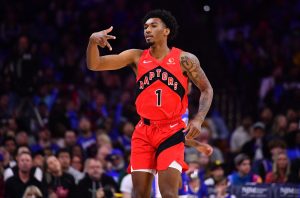All the Eastern Conference playoff matchups are still to be determined, but COVID-19 vaccinations could be a factor for whomever winds up facing the Raptors, writes Tim Bontemps of ESPN.
On January 15, Canada implemented a rule barring unvaccinated players from entering the country. Among the top four teams in the East, the Heat and Bucks both confirmed to Bontemps that all their players have been vaccinated, but the Celtics and Sixers refused to comment.
Boston kept four players out of action Monday in its first game at Toronto since the new rule was implemented. It was the second night of a back-to-back, so their absence may not be related to their vaccination status.
Robert Williams suffered a meniscus tear in Sunday’s game that will require surgery, and Al Horford was unavailable both Sunday and Monday for personal reasons. Jayson Tatum missed the game with right patella tendinopathy, and Jaylen Brown was held out because of soreness in his right knee.
Sources told Bontemps that Williams has received the vaccine, but there’s less clarity on the other three Celtics. Tatum said on media day that he was vaccinated, but he defended people who chose not to be. Brown made a similar statement, saying the vaccine is a matter of choice.
Brown and Horford both spent time in health and safety protocols in October, Bontemps notes, and Horford re-entered the protocols in December.
The Sixers haven’t played in Toronto since late December, but they’ll be there on April 7, which should provide some clarity on who will be eligible.
Any players who want to get vaccinated in advance of an upcoming series are running out of time, Bontemps adds. To qualify as fully vaccinated in Canada, people must be two weeks beyond either a single Johnson & Johnson vaccine or the second shot of the two-dose options. Games 3 and 4 of a playoff series are roughly three weeks away.
It’s also possible that the Raptors could host the Nets in the opener of the play-in tournament, which would affect Kyrie Irving, the league’s most noted non-vaccinated player. Irving was just cleared last week to begin playing home games, so he will be eligible at some point in the playoffs regardless of Brooklyn’s opponent.
